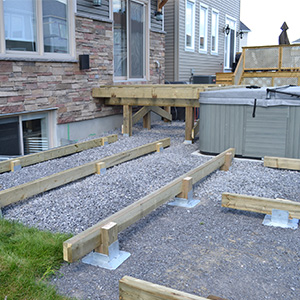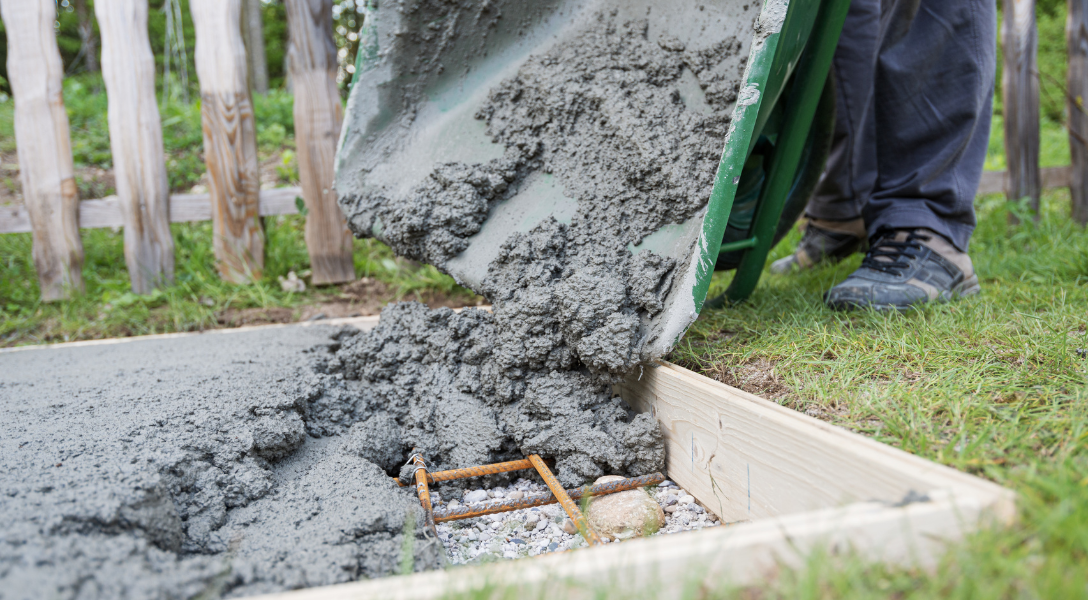Choosing the Right Deck Footings for Security and Toughness
The long life and security of your deck depend heavily on the kind of footings you choose, as they give the necessary support and security to withstand the test of time. In this conversation, we will certainly check out the numerous kinds of deck grounds, consider the crucial elements to weigh when making a choice, and dive into the pros and cons of different alternatives.
Kinds Of Deck Grounds
These grounds are composed of a round opening loaded with concrete, which provides a solid foundation for the deck messages. Concrete pier footings are relatively easy to set up and provide exceptional security, making them a prominent option for lots of deck tasks.
These footings are installed by screwing them into the ground, which produces a secure structure for the deck. They likewise allow for very easy modification and leveling of the deck if required.
Additionally, some contractors opt for precast concrete grounds. These grounds are constructed from resilient concrete and come in numerous shapes and sizes to fit different deck styles. Precast concrete footings are convenient to mount and give a steady base for the deck framework.
Lastly, another choice is the post-in-anchor ground system. This kind of footing entails driving a metal support into the ground and affixing it to the deck message. It supplies versatility in terms of placing the deck blog posts and is suitable for decks with lightweight structures.
When selecting the appropriate sort of deck ground, it is important to consider aspects such as soil problems, deck load, and regional building regulations (Deck Footings). Consulting with a professional contractor or structural designer can help make sure the ideal footing is selected for a safe and steady deck
Elements to Take Into Consideration When Choosing Grounds
When choosing the appropriate footings for a deck, it is critical to thoroughly consider various aspects such as dirt problems, deck load, and adherence to regional building regulations. These elements play a considerable duty in making certain the stability and longevity of the deck framework.
One of the main aspects to take into consideration is the dirt problems. The sort of dirt on which the deck will certainly be built identifies the sort of grounds called for. As an example, decks improved loose or sandy soils may need much deeper footings to supply appropriate assistance and protect against settling. On the various other hand, decks constructed on clay or expansive soils may need grounds that can accommodate the soil's propensity to broaden and contract.
Another vital variable is the deck lots. The weight of the deck, consisting of the products utilized and any possible online tons such as furniture or events, must be taken into consideration when choosing footings. The grounds must be made to birth the weight of the deck and distribute it equally to avoid any kind of architectural problems or failures.
Finally, adherence to local building ordinance is critical. Building ordinance differ from region to area, and it is important to follow the certain requirements established by the regional authorities. Deck Footings. These codes ensure that the deck is developed safely and meets the essential requirements for architectural stability and load-bearing ability
Concrete Grounds: Benefits And Drawbacks

Concrete grounds supply a number of advantages and drawbacks when utilized as the foundation for a deck. On the positive side, concrete footings offer superb security and resilience.
Another advantage of concrete footings is their versatility. They can be poured into different shapes and sizes to accommodate various deck designs and setups. Concrete footings can be personalized to fit the particular needs and requirements of the deck structure.
Nonetheless, there are likewise some drawbacks to using concrete grounds. This can increase the general cost of the deck task and might require specialist help.

Helical Piers Vs. Sonotubes: Which Is Much better?
In considering straight from the source the structure alternatives for a deck, over here the contrast in between helical piers and sonotubes is crucial in identifying the remarkable option. Helical piers, additionally recognized as screw heaps, are steel shafts with helical plates connected to them. They are turned right into the ground making use of hydraulic machinery, offering a sturdy and secure structure for the deck. On the other hand, sonotubes are cylindrical types made from cardboard or fiber material that are loaded with concrete. They are put in a hole went into the ground and provide assistance for the deck.
The helical plates on the piers produce a strong grasp with the soil, shifting or avoiding any kind of motion of the deck. Sonotubes, on the various other hand, depend solely on the concrete filling up for security, which might not supply the same level of stamina and resistance.
In terms of installation, helical piers are reasonably less complicated and faster to install contrasted to sonotubes. The hydraulic equipment made use of to twist the piers right into the ground makes sure a reliable and fast procedure. Sonotubes, on the other hand, call for excavating holes and putting concrete, which can be labor-intensive and taxing.
Furthermore, helical piers are an even more flexible alternative. If needed, they can be utilized in numerous dirt problems and can be adjusted or strengthened. Sonotubes, on the various other hand, might require additional support, such as rebar, in specific dirt problems or locations with high load demands.
Selecting the Right Footings for Your Deck's Measurements
For optimum structural stability, it is important to very carefully pick the suitable grounds that line up with the dimensions of your deck. The dimensions of your deck, including website link its elevation, size, and size, play a considerable function in establishing the type and size of footings needed.
When choosing footings for your deck, it is necessary to consider the load-bearing capability of the dirt. The weight of the deck, incorporated with the weight of any type of furniture or people on it, exerts a significant force on the footings (Deck Footings). It is important to select footings that can adequately support this weight without shifting or sinking over time.
The dimension and form of the footings ought to also be considered. Larger decks with greater measurements need larger footings to give enough security and assistance. The shape of the grounds, whether they are square or round, depends on the design and layout of the deck. Additionally, the deepness at which the grounds are installed should be determined based on the frost line in your area to prevent any heaving or shifting due to freezing temperatures.
Verdict
In conclusion, choosing the ideal deck footings is vital for making sure security and resilience. Aspects such as the kind of grounds, the deck's measurements, and the pros and cons of different alternatives should be considered.
These footings consist of a round opening loaded with concrete, which gives a strong structure for the deck posts. Concrete pier footings are fairly simple to set up and use superb security, making them a preferred selection for lots of deck tasks.
Precast concrete grounds are hassle-free to mount and give a secure base for the deck framework.
It provides versatility in terms of positioning the deck messages and is appropriate for decks with lightweight structures.
Concrete footings offer a number of benefits and negative aspects when made use of as the structure for a deck.